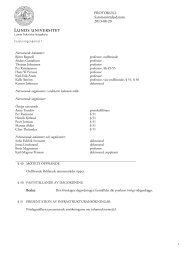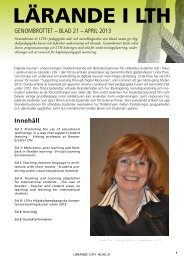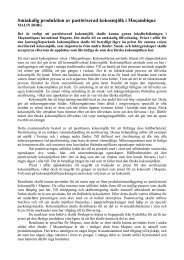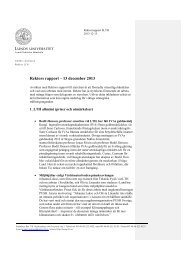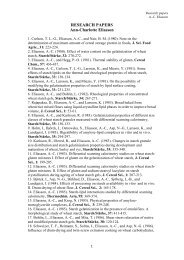User Experience Design at Sony Ericsson - Introducing the Virtual Pet
User Experience Design at Sony Ericsson - Introducing the Virtual Pet
User Experience Design at Sony Ericsson - Introducing the Virtual Pet
Create successful ePaper yourself
Turn your PDF publications into a flip-book with our unique Google optimized e-Paper software.
Forlizzi & Ford – The Building Blocks of <strong>Experience</strong>: An Early Framework for<br />
Interaction <strong>Design</strong>ers.<br />
Forlizzi & Ford (2000) present three ways to talk about experience:<br />
<strong>Experience</strong> Based on <strong>the</strong> definition of cognitive scientist Richard Carlson, this refers to <strong>the</strong><br />
constant stream th<strong>at</strong> happens during moments of consciousness.<br />
An experience Based on work by philosopher John Dewey, this refers to having an experience, which<br />
has a beginning and an end. These kinds of experiences - whe<strong>the</strong>r it is seeing a<br />
movie or surviving cancer –changes <strong>the</strong> user.<br />
<strong>Experience</strong> as story Refers to <strong>the</strong> view of AI-scientist Roger Schank, who sees stories as vehicles th<strong>at</strong><br />
we use to condense and remember experiences.<br />
The three different types of experiences and how <strong>the</strong>y rel<strong>at</strong>e to each o<strong>the</strong>r.<br />
These views on experience are combined in an initial framework of experience as it rel<strong>at</strong>es to interaction design<br />
where four dimensions of experience are discussed:<br />
Sub-consciousness Represents experiences th<strong>at</strong> do not compete for users <strong>at</strong>tention and thinking<br />
processes. An autom<strong>at</strong>ed morning routine is an example where users do not<br />
process any inform<strong>at</strong>ion consciously.<br />
Cognition Refers to experiences th<strong>at</strong> require users to think about wh<strong>at</strong> <strong>the</strong>y are doing. These<br />
could for example be interactions with new products or products th<strong>at</strong> are<br />
confusing.<br />
Narr<strong>at</strong>ive Corresponds to experiences th<strong>at</strong> force users to formalize in language wh<strong>at</strong> <strong>the</strong>y are<br />
doing and experiencing.<br />
Storytelling Refers to <strong>the</strong> subjective parts of an experience. <strong>User</strong>s give meanings to situ<strong>at</strong>ions,<br />
<strong>the</strong>reby cre<strong>at</strong>ing life stories and stories of product use.<br />
<strong>Experience</strong>s shift between <strong>the</strong>se dimensions. For example, a standard routine like dialing a phone number can go<br />
from a sub-conscious act to a conscious one when <strong>the</strong> user notices th<strong>at</strong> s/he dialed <strong>the</strong> wrong number. If s/he<br />
tells his/her friend about this, <strong>the</strong> experience moves on to a narr<strong>at</strong>ive and storytelling dimension as well. Ano<strong>the</strong>r<br />
example would be routines th<strong>at</strong> are practiced often, th<strong>at</strong> might migr<strong>at</strong>e from cognition to sub-consciousness, as<br />
less and less effort is needed when performing <strong>the</strong> task.<br />
23




